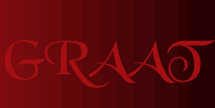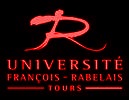
Editor-in-chief Trevor Harris
Book Review Editor Molly O'Brien Castro
![]()
Eva Johanna Holmberg, Jews in the Early Modern English Imagination. A Scattered Nation. Transculturalisms 1400-1700 (Burlington, VT: Ashgate, 2011) $98, 180 pages, ISBN: 978-1409411918─ Frédérique Fouassier, Université François Rabelais, Tours.
Eva Johanna Holmberg is a postdoctoral researcher at the University of Helsinki, Finland, and a visiting fellow at the Department of History, Queen Mary, University of London. This is her first book.
It is part of the new Ashgate collection Transculturalisms, 1400-1700, a series which aims at presenting a study of early modern interactions and contacts, among states, individuals and commercial ventures throughout the world as new territories were being discovered. The collection focuses, among other things, on the contacts between cultures and the ways in which the sense of identity was built through the encounter with the Other and the confrontation between travelers’ preconceived ideas about aliens and the real people they met.
The question of Jewry in the early modern world has been one of the major fields of study over the past twenty years. But these works are either general histories of the Jewish people in early modern Europe, or they are centered on one aspect in particular, mainly theological and spiritual questions, or one particular country (especially Italy and Venice). Only two place themselves within the same critical perspective as Holmberg’s: Yaacov Deutsch’s Judaism in Christian Eyes: Ethnographic Descriptions of Jews and Judaism in Early Modern Europe (Oxford UP, 2011), which bears on the way Christians saw Jewish rituals, and Dean Philip Bell’s Jews in the Early Modern World (Rowman & Littlefield, 2008), which tackles the topics Holmberg embraces (namely social life, demography, religion, culture, and the relationship with other communities) but which is much wider in both chronological and geographical scopes and studies far fewer primary sources.
Basing herself on travel literature mainly, Holmberg explores the encounters between English travelers and Jews, in Southern Europe, North Africa and the Levant, and the ways in which the confrontation with “real” Jews at a time when they were banished from England clashed (or not) with the explorers’ preconceived ideas about the Jewish people. This approach is part of a fairly recent trend aiming at “re-integrating Jewish themes to other areas of history” [2], since, as Holmberg very aptly remarks, there are for instance far more references to Jews in Stow’s early-seventeenth-century Survey of London than in many later histories of Britain. After an extensive introduction in which she explains her aims, method and perspective, Holmberg divides her study into three long chapters. The first one, “Locating the Jews”, bears on the British travelers’ insistence on locating Jews both on maps of the world, in city districts and ghettoes, and in synagogues. The relentless effort to locate the Jewish community was mainly due to the fact that Jews were a constant cause of wonder because they had lost their land, and also because at the time, the places where people lived were thought to have a great effect on their inhabitants. The second chapter, “Observing the Religion of the Jews”, focuses on the way in which Jews were seen to practice their religion, which bears all the more relevance in the context of the aftermath of the Reformation. In this chapter, Holmberg considers the questions of Jewish sacred texts, of the roles within the household, and of their religious rituals and ceremonies, chief among which the very specific aspect of circumcision. The last chapter, “Framing Jewish Bodies and Souls”, investigates English portrayals of the Jews’ appearance, from their clothing and size down to the color of their skin. The link between chapters is provided by the central idea that in early modern English culture, “all aspects of the Jews were made to speak of their place in the world” [9].
The groundbreaking aspect of Holmberg’s work resides in the use she makes of sources, and in the choice of these sources itself. Not only does she consider aspects which are usually dealt with separately in other studies about Jews in the early modern period, but she does so through the original lens of travel literature, which constitutes a hitherto unseen approach. In order to do so, she uses an amazing amount of sources. Her twenty-page long bibliography counts a great number of primary sources, mainly travel literature but not only, and Holmberg provides a very shrewd and thorough analysis of the sources in question. She also embraces a wide range of historical approaches, which can notably be seen in the diversity and wealth of secondary sources she mentions in her bibliography, which are far from being restricted to the questions of Jewry and travel writing, or even to the early modern period, but also take into account, to name but a few, issues such as gender and crossdressing, the way to conceive and write history and anthropology, or Shakespeare. What is more, she covers an amazing number of aspects of the question, with an obvious will to leave no point aside and provide as thorough an analysis as possible. She proceeds in a very scientific, methodical way. The outline is carefully designed, very well thought out as witnesses for instance the transitions she provides between her chapters.
Besides, Holmberg’s study is well-anchored in the contemporary trend of the history of the collective imagination and of representation, which strives to consider history as something more than a sum of blunt facts and dates. Her book is also in accordance with the very fruitful current exploring the questions of cultural exchanges and travel in the early modern period. Indeed, as she states herself in the very first pages of her introduction, Holmberg’s aim is to “discover the ideas attached to Jews and information that was circulating about them before the Jewish readmission to England in 1656” [2, emphasis mine]. Most studies about the representation of Jews in the early modern period bore on drama, the main one being James Shapiro’s groundbreaking Shakespeare and the Jews (1996). At the core of the way English travelers depicted Jews lies the question of the construction of identity. Travelers bore with them not only their own preconceived ideas about Jews, but also questions about their own identity. Identity is a complex, hybrid notion resulting from the blending of religious, ethnic, professional and gender considerations. The way Jews lived and behaved helped the English first to decide how to deal with these aliens, and then, reflect about their own ways and customs. One must remain aware at all times that Jews are presented in ways determined by the prejudices circulating about them. What is of primary interest to the author is precisely the zone where the imagined, fantasized Jew meets the actual Jew, and the effect this encounter creates in early modern English travelers. Holmberg therefore posits herself in the recent critical trend interested in “cultural mixture and hybridity” [4] and uses theories about stereotyping and the construction of identity and otherness extensively. As with any alien, it was essential that Jews be represented in as distinct a fashion from good, respectable English Protestants so that the latter could build a firm and solid sense of identity in an England where the latter had been unsettled by the turmoil of the Reformation. What the author wants to insist on is the multiplicity of perspectives and the complexity these interactions, exchanges and cross-cultural encounters generate. For all these reasons, Holmberg explicitly defines herself as a cultural historian: what matters to her is the way English travelers interpreted Jews and wrote about them, which stems from “culturally shaped and conditioned ideas about Jews in England” [5]. Another key word of Holmberg’s approach is that of imagination, which appears in the subtitle of the book. She insists that even if it is culturally shaped, imagination is a very personal practice and therefore cannot be considered a methodological tool, but rather “a perspective for investigating early modern English minds at work” [5].
Despite the inevitably stereotyped and prejudiced aspects of English travelers’ writings, Holmberg strives to show the complexity of their representation of Jews. Most of these texts cannot be hastily categorized as being either fully anti-Semitic or philo-Semitic. Not all these texts are stereotyped. The travelers’ main goal was not ideological or theological; they were above all seeking to provide practical information to their contemporaries, even if their texts were sometimes imbued with the rhetoric of the polemical writers who attacked Jews and their religion. Holmberg also adds another qualification to the texts she studies: travel writing was a codified genre, which relied on classical and medieval traditions. This aspect must not be neglected when one studies these texts.
The only reproach which could be made to Holmberg’s book is that it sometimes lacks a synthetic hindsight. For instance, the subpart of Chapter 3 entitled “Domestic Duties, Devotions and Ceremonies” deals successively with a lot of aspects, each of which is only very briefly discussed. This is mainly due to the fact that the author only found a scarcity of sources on these aspects, but the reader is left frustrated and this does not do justice to the rest of the study. Holmberg’s approach could also be more synthetic when she tackles the same theme in a variety of sections. Circumcision, for instance, is discussed several times: a whole subpart of Chapter 3 is dedicated to it, but it is alluded to above, and it is dealt with again in the subpart on ceremonies, and again in Chapter 4 about physical appearance. The argument would have gained in strength had this aspect been analyzed by itself once and for all in an extensive way.
Holmberg’s study provides a groundbreaking and much-needed analysis on a question which still needs to be seriously investigated. Her book will no doubt prove very useful to all those interested in the history of ideas in general and in the early modern period in particular, but the clear layout and her agreeable, accessible style will surely attract non-specialists, who will find a wealth of information in this book.
© 2013 Frédérique Fouassier & GRAAT
Senior
sub-editor: Hélène Tison
lntison@yahoo.fr
Webmaster Georges-Claude Guilbert
